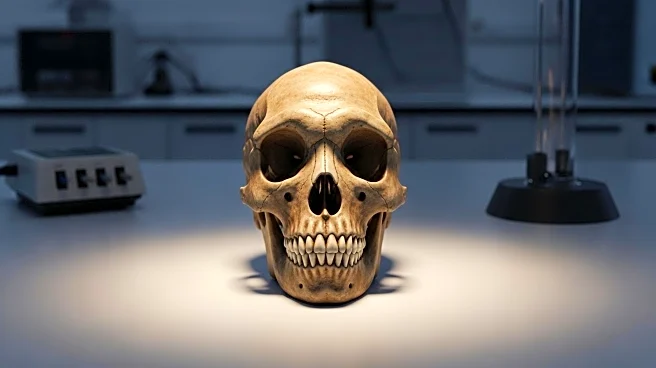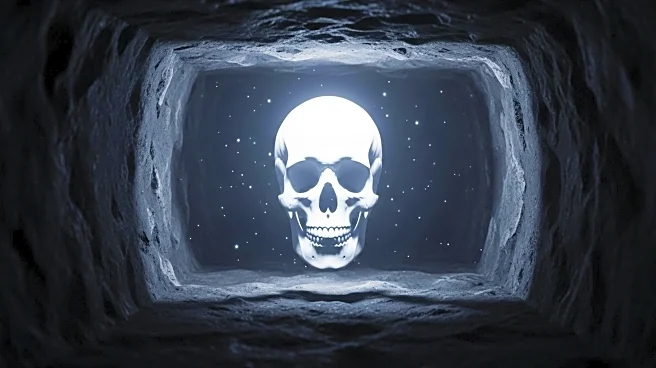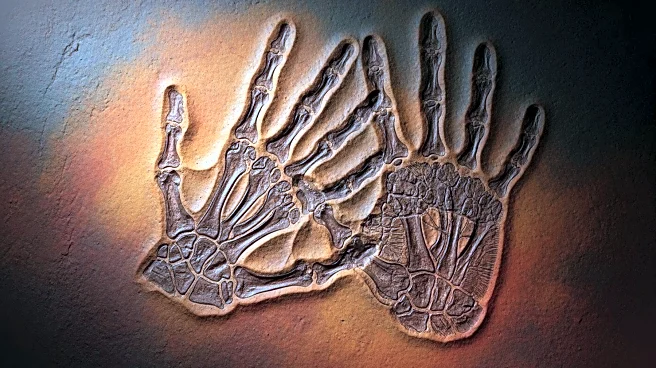What is the story about?
What's Happening?
Researchers from Tel Aviv University have identified Neanderthal traits in the skull of a child found in Skhul Cave, Israel, dating back approximately 140,000 years. The skull, which shows features of both Homo sapiens and Neanderthals, provides the oldest direct evidence of interbreeding between the two species. The study, led by anthropologist Israel Hershkovitz, utilized high-resolution 3D scans to analyze the skull's structure, revealing an intracranial blood supply system, lower jaw, and inner ear typical of Neanderthals. This discovery challenges previous assumptions about the timeline of Neanderthal migration into the region, suggesting they may have been present as far back as 400,000 years ago.
Why It's Important?
The identification of Neanderthal traits in the Skhul child skull has significant implications for understanding human evolutionary history. It suggests that interbreeding between Neanderthals and Homo sapiens occurred much earlier than previously thought, potentially altering the timeline of human migration and interaction. This discovery enriches the narrative of human ancestry, highlighting the complexity of genetic exchanges between ancient populations. It also underscores the importance of revisiting historical fossil sites with modern technology to uncover new insights into human evolution.
What's Next?
The study opens avenues for further research into the genetic history of Neanderthals and Homo sapiens in the Levant region. Future studies may focus on obtaining ancient DNA from the Skhul remains to confirm hybrid ancestry and explore the extent of genetic exchange between the two species. Additionally, researchers may re-examine other fossils from Mount Carmel using similar imaging techniques to identify Neanderthal traits and better understand the interactions between ancient populations.
AI Generated Content
Do you find this article useful?












